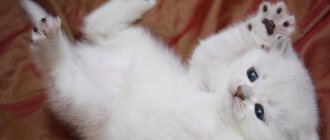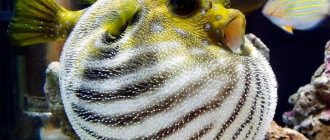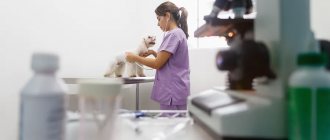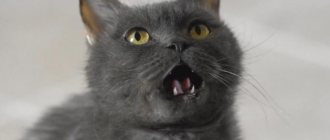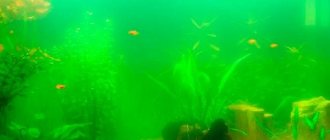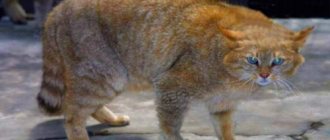For some fish species, lying on the ground or hiding in bottom decorations is a common behavior. This is typical for catfish, loaches, knives, some species of cichlids and labyrinths. For some fish, a change of location from the middle and upper layers of water to the bottom is associated with the breeding season: preparing a place for spawning and protecting the laying of eggs. For others, such as neons, the bottom layers are a place of rest and sleep. But if lying on the bottom is not typical for your pet, it is worth analyzing the possible reasons for this behavior.
Changes in the composition and parameters of the aquatic environment
Very often, ornamental fish sink to the bottom of an artificial reservoir when the acidity level increases and the concentration of salts and mineral components increases. Such sudden changes cause a state of osmotic shock in the fish.
Similar problems can arise when moving new fish to another aquarium or using fertilizers or organic mixtures that are used to feed plant crops. In such cases, it is necessary to purchase a special test and check the water parameters in the aquarium. After this, clean the artificial pond and replace the water in it. It may also be necessary to introduce compounds designed to remove salts and metals from the liquid.
The tail is peeling
Damage to the tail indicates diseases:
- Fin rot. In goldfish, red veins appear, the edges become smaller, and the fins may turn black. Place the golden carp in a bath of salt water (1 teaspoon per 3 liters) for half an hour. Carry out the procedure once a day for a couple of weeks. The use of preparations based on malachite green and methylene blue is effective.
- Flexibacteriosis (columnaria). Appears in dirty and too warm water. The initial stage of the disease is treatable. In addition to discoloration of the tail with subsequent destruction, ruffling of the scales in the tail part, paleness of the edges of the scales, lightening of the mouth area and stiffness of movements are observed. Immerse the goldfish in baths with a pinkish solution of potassium permanganate for 10–15 minutes for 3–5 days. You can use chloramphenicol (50 mg per 3 l), adding it every other day for a week. After this, add kanamycin (1 g per 20 l) according to a similar scheme.
Relocation
Many ornamental fish have an extremely difficult time moving to another artificial body of water. In such cases, passivity and lying on the bottom are manifestations of severe stress or even a state of shock. According to experts, the acclimatization stage falls into the normal category, and therefore there is no need to worry too much.
The main thing is to first study the characteristics of a particular type of fish, their requirements for the aquatic environment and take care of creating optimal conditions for keeping them.
As a rule, after a few days the fish gets used to the new habitat, its condition improves, and, consequently, the level of activity increases. If your pet spends more than 3-5 days in a lying position, while breathing heavily and showing other painful signs, you should seek advice from a specialist.
Red spots
Causes of red spots:
- Rubella is a collective name for spring viremia of carp, aeromonosis, pseudomonosis and vibriosis - diseases with similar manifestations. Accompanied by hemorrhages, especially in the head area. Other signs: the appearance of ulcers, bulging eyes, swelling of the abdomen. Carry out treatment in a separate container. You will need leukocyte human interferon (1 ampoule per 35 l) in combination with chloramphenicol (2.5 g per 100 l). Apply every other day until the condition improves. Replace a third of the water at least 1-2 times a week. Chloramphenicol (250 mg per 25 g of feed) or furazolidone (0.5 g per 25 g of feed) also helps. Feed the mixture for 6 days. Provide continuous aeration during treatment.
- Skin and gill flukes. Animals behave restlessly, try to scratch themselves on objects, fins are often pressed, red spots appear on the body, and the skin becomes covered with mucus. Treat with special means against parasites or using baths with potassium permanganate.
- Ammonia poisoning.
Changing the temperature
If the fish lies on the bottom, this may be a sign of temperature shock, which occurs in most representatives of ornamental species when the temperature of the aquatic environment drops to +5°C and below. It is important to monitor temperature indicators, especially when introducing new individuals into the aquarium.
After the temperature increases, the fish will gradually come to its senses. However, subsequently, the stress experienced can negatively affect her health, provoking the development of infectious, autoimmune diseases, weakening of the immune system and the body’s own protective resources.
Pets belonging to the bottom type
Some representatives of aquatic fauna belong to the representatives of the bottom type. Such fish either lie on the bottom or swim below. Such behavior is completely normal for them, since these aquatic inhabitants feel excellent in the lower layers of water.
Bottom-type pets include:
- loaches;
- Loricariaceae;
- catfish.
If you do not want the inhabitant of your home mini-reservoir to be near the bottom all the time, when purchasing, check in which layers of water the species you like floats.
Improper feeding
Reduced fish activity and other health problems caused by improper feeding are a widespread phenomenon among beginning aquarists. In no case should you overfeed ornamental fish, especially since most of them absorb and digest food at a slow pace.
Constant overeating threatens the development of obesity, which can even lead to the death of your pet. To avoid such unfavorable consequences, if there is a clear increase in the body weight of the fish, accompanied by low motor activity and staying at the bottom of the reservoir, it is recommended to temporarily move it to another aquarium, significantly reduce the diet and carefully monitor the feeding process.
It will be useful to arrange fasting days from time to time, which contribute to the accelerated stabilization of body weight and metabolic processes.
What to feed Gourami in an aquarium at home
Under natural conditions, the food consists of malaria mosquito larvae and small aquatic invertebrates. They can also feed on tender parts of plants. They are unpretentious when it comes to food, but it is still advisable to provide them with not only a varied, but also a balanced diet.
There is a large selection of different dry, live and frozen food available for sale. When choosing food, you should take into account the types of fish living in the aquarium. And it must be remembered that Gouramis have a small mouth and the size of the food should correspond to the capabilities.
Diseases
Moving to the bottom, low activity, lethargy and apathy are dangerous symptoms, often indicating the development of deadly diseases. Many fish sink to the bottom due to disturbances in the functioning of the gastrointestinal tract or pathologies of the gallbladder.
Such illnesses can be provoked by pathogens that enter the body of underwater inhabitants along with water.
The penetration of single-celled organisms into the gall bladder area can lead to the death of the fish, so it is important not to start the process and carry out proper treatment in a timely manner.
If we are talking about representatives of large, predatory breeds of aquarium fish, then their desire to be on the bottom or in the ground is often observed after fights as a result of traumatic injuries. As a rule, injuries can be detected with the naked eye, but only a specialist should treat them.
Swim bladder dysfunction
There is an important organ in the anatomy of fish - the swim bladder. These are special bags filled with gas. With the help of a bladder, the fish controls its buoyancy and can stay at a certain depth for a long time without any effort. Its deformation or damage is not fatal, but the fish will no longer be able to lead a full life without restoring the function of this organ.
Signs:
- the pet lies on the bottom and has difficulty getting up to get food;
- when moving, falls to one side;
- works intensively with its fins, swimming as if with a load.
Causes of damage to the swim bladder:
- mechanical, usually injury during transportation;
- the result of the development of a bacterial infection;
- the result of poor nutrition;
- indigestion.
The last two reasons are the most common. The fish eats too much air along with the food, which causes the stomach to swell. The pet systematically overeats. This leads to obesity, enlarged liver, cysts develop in the kidneys and ultimately leads to the growth of these organs and compression of the swim bladder.
In some ornamental forms of goldfish and Siamese fighting fish, the swim bladder can be severely deformed during the selection process, and, as a result, is vulnerable to this type of damage.
Breed Features
Beginner aquarists should know that for some species of fish, lying on the bottom of an artificial reservoir is completely natural and normal behavior. For example, catfish or corydoras swim all the time in the bottom layers of a reservoir and generally prefer to spend most of the day resting on soft ground.
Neons, fragile and sensitive creatures prone to traumatic injuries, also give preference to the lower layers of the aquarium. For this breed, the bottom of the tank is the most comfortable and safe habitat.
Cichlids, members of the loach family, also spend a lot of time digging in the soil of the aquarium. For them, such behavior is considered a manifestation of the norm in their natural habitat; they also dig up soil and aquatic plants. In addition, by wallowing in stones and soil, these types of aquarium fish cleanse their bodies of mucus, which can provoke the development of dangerous inflammatory processes.
Naturally, if the fish swims in the bottom layers of the reservoir when it was recently introduced into the aquarium.
This is explained simply. For a pet, a new aquarium is perceived as another world, unknown and fraught with potential danger. This behavior is especially typical for goldfish, representatives of the labyrinthine, cichlid, carp-toothed, and goldfish families.
Why do aquarium fish lie on the bottom?
Owners of artificial ponds are often frightened when they see that their favorite fish are lying at the bottom of the aquarium. In this case, there is no need to panic: perhaps the pet is simply resting, digging in the ground or studying something at the bottom. But if the phenotype is breathing heavily or lying on the bottom of the aquarium for a long time, it is worth carefully understanding the reasons - the pet is probably sick or experiencing stress.
Natural causes
Aquarium fish differ from each other in shape, color and placement in the water layers. If the fish is lying on the bottom, this is not a reason to panic - you should first make sure that this behavior does not correspond to the behavior of the pet.
For example, corydoras or speckled catfish are bottom dwellers, and phenotypes are difficult to see in the upper part of the aquarium. These representatives live only at the bottom of the tank, cleaning the substrate from food debris and algae.
Neons belonging to the Characin family also often lie on the bottom of the aquarium. Small and fragile, neons feel safe hiding among the seaweed and swimming closer to the bottom.
Other lovers of lying down are cichlids and loaches. The species are distinguished by their curiosity and restless nature, so they often rummage in the soil, pebbles and look for something among the scenery. Loach fish suffer especially from a love of disorder; moreover, this species, rummaging in the substrate, removes an extra layer of mucus from the body.
If the above species are present in the reservoir, then the question of why the fish lie at the bottom of the aquarium can be given a clear answer - this is the direct behavior of the pets.
However, it may also be that a phenotype that does not live in the bottom layers of water suddenly falls sharply to the bottom of the aquarium. This also does not mean that the pet is sick or intends to pass away. The causes of this phenomenon could be three things:
- If fish swim on the bottom at night, most likely the little inhabitants are simply sleeping. Like all living creatures, pets need rest, so most phenotypes sleep at night, and the day is the time to be awake.
- If fish, recently introduced into a fresh reservoir, lie at the bottom of the tank, then this is due to adaptation. New pets become stressed when they see an unfamiliar area, so the fish hides. This behavior is typical of labyrinth or goldfish.
- The reason why pets lie on the bottom may be overeating. If you overfeed the fish, then due to the heavy abdomen they sink down until the weight goes away.
Main causes with dangerous consequences
If the above reasons did not help answer the question of why the fish in the aquarium lie on the bottom, then most likely the pets are trying to signal violations in their maintenance.
Failure to comply with the temperature regime, moving into a newly created aquarium - all this negatively affects the well-being of the phenotypes, and by lying on the bottom of the reservoir, the fish make it clear that the conditions of detention have been violated.
The most common reasons are:
- osmotic shock;
- insufficient volume or incorrect shape of the tank;
- temperature violation;
- incorrect composition of water;
- infectious diseases.
Osmotic shock occurs in fish when moving into a new, newly launched aquarium. In such a tank, the biological balance has not yet normalized, so the pets experience stress and lie down on the bottom of the aquarium.
When buying an aquarium, owners often give preference to newfangled designer models, without thinking about how the pet will feel. Such inattention can lead to deterioration in the health of the fish, because maintaining each phenotype requires a certain size of the aquarium. If the fish lies at the bottom of the reservoir, then it is quite possible that the volume of the reservoir is too small.
The shape of the reservoir is no less important. Aquariums in the shape of glasses or balls have curved walls, which causes them to refract light incorrectly, which negatively affects the health of pets.
Temperature disturbances also affect the behavior of phenotypes. With minor deviations, the fish expresses dissatisfaction, demonstrating atypical behavior, and with serious violations, the pets die.
Aquarium fish sink to the ground in the tank when there are sharp changes in acidity and hardness levels, when the water quality no longer meets the requirements of the species. The cause may also be poor-quality fertilizers, mixtures or solutions.
Other reasons
Sometimes roars sink to the bottom under the influence of certain factors:
- dysfunction of the swim bladder (occurs with obesity, injuries, and some infectious pathologies);
- exhaustion of the body due to poor nutrition, hypoxia, the period of spawning and reproduction;
- psycho-emotional shock;
- feeling of approaching death;
- acidosis;
- alkalosis;
- natural processes of aging of the body, manifestations of age-related changes.
This behavior can also occur in fry that have used the yolk sac. Such babies, lying on the bottom, move around the aquarium with sudden movements. This symptom indicates a specific pathology, which, as a rule, goes away on its own as the individual grows older.
Die
Be responsible when cleaning your aquarium. You should know the water parameters and check it with tests. If your goldfish dies, immediately remove the deceased pet from the tank and inspect the other inhabitants of the aquarium. Before getting a fish, get acquainted with the features of starting a reservoir, feeding, compatibility and maintenance of the aquarium. Goldfish die for the following reasons:
- water pollution;
- unsuitable conditions;
- no quarantine for new fish;
- neglect of processing of feed and plants;
- overfeeding
How to avoid problems
In order for the fish to feel comfortable and actively move around the aquarium without being in a lying position, it is important to create optimal, comfortable conditions for them. To do this, you should pay attention to the recommendations of experts regarding the arrangement of an artificial reservoir:
- Equipment. Most fish require additional lighting, filtration, and aeration. However, you should know how to properly use additional devices. When introducing new fish, it is recommended to include them a week after the completion of the acclimatization period.
- Soil – should be selected taking into account the characteristics and needs of a certain type of fish, which is planned to be populated.
- Pouring water should be done along the glass wall of the tank. After this, the water must sit for some time before fish can be introduced into it.
- Planting of aquatic and above-water green crops should be carried out several days after pouring water into an artificial reservoir.
- Timely cleaning of the tank and soil from food debris, waste products of aquarium inhabitants and other debris.
- Water replacement should be carried out weekly, approximately 25-30% of the total volume of liquid in the tank.
- Clean installed filters at least once a week.
- Complete cleansing of the artificial reservoir, including soil and decorative elements, should be carried out at least once over a period of 2-2.5 weeks.
- Compliance with the feeding regime and a varied diet (read more about how to feed aquarium fish).
- Carrying out periodic disinfection of an artificial reservoir.
Compliance with the rules listed above will help create the best conditions for the life and activity of aquarium fish, as well as protect them from the development of dangerous diseases that affect motor activity.
If the fish lies on the bottom, then this phenomenon can be caused by numerous reasons. First of all, it is worth checking the water parameters in an artificial reservoir, the temperature regime, and replacing the fluid. If the situation does not change within several days, then it is worth seeking advice from a specialist, since often a decrease in motor activity and the desire to stay as close to the ground as possible indicates the development of diseases that require mandatory treatment.
Prevention
There are a large number of reasons why pathologies and many infectious diseases develop; in order to avoid disastrous consequences, it is recommended to regularly measure the temperature of the water (or better yet, install a thermometer in the aquarium). The water temperature should be between +23 and +25 degrees Celsius.
A healthy fish is the joy and pride of an aquarist.
High-quality food is used for feeding; if possible, it is recommended to adhere to a balanced diet. It is necessary to use only those dry foods that are intended specifically for goldfish. Herbal supplements are great as a supplement. There is an opinion that a healthy fish is a hungry fish. You should give as much food as the fish can eat completely in 30-40 seconds. Every week they do a fasting day.
Overfeeding is one of the causes of obesity that should be avoided. The soil is chosen with a fine fraction - 2-3 mm. Once a week, the aquarium needs to be cleaned with a water change (30% of the total volume) and a soil siphon. Filtration and aeration are provided around the clock, otherwise the fish may suffocate, so turning off the equipment at night is not the best option.
Video on the topic: “Goldfish swims upside down”
MAINTENANCE AND NUTRITION OF NEON FISH
You can feed neon with any food for small fish. Alternate frozen, artificial and live food - this will improve the quality of life of your fish. And once a week it is possible and even beneficial to give them a fasting day.
A large aquarium is not required, if you don't have a school of fish. Neon does not float with the current, which means you don't need a compressor; the fewer bubbles in the aquarium, the better. At the right temperature in the aquarium, the lifespan of fish increases, 22 degrees is the best solution, about 28 degrees the fish will live 1.5 years or less.
Neons are one of the most low-maintenance species of aquarium fish. Buying this fish will be the right choice for a novice aquarist, since keeping these neon beauties does not require high training and should not be difficult even for a beginner.
We invite you to familiarize yourself with Month-old piglets weight, cost of maintenance
These are very peaceful fish that have a good disposition and are able to get along well with any neighbors in the aquarium and never show aggression on their part. Neons also have good health and are not a fish species prone to frequent diseases.
However, this fish still has some grooming needs. And compliance with these certain conditions will help to avoid any problems with their health.
The main and most significant condition for keeping neons on their lifespan can be considered compliance with the optimal temperature level inside the aquarium. The nature of neon is designed in such a way that at temperatures above 23 degrees the fish ages faster.
The best temperature regime will be 18-22 degrees, and it is at this temperature that neons can live their required 3-4 years. If the water temperature in the aquarium is 25-27 degrees, it is unlikely that your neon will last more than 1.5 years. A high degree increases the biorhythm of neons, and this fact should be taken into account primarily when maintaining them.
Next, it is worth noting the need for neon to provide high-quality water aeration and filtration. It is also necessary to prevent stagnation of water and change it once a week. Neons are not particularly demanding regarding water hardness and acidity.
Based on the bottom lifestyle of neons, the need for the correct choice of soil and scenery follows. The soil should be dark, and at the bottom there should be enough of all kinds of grottoes and shelters. This will help recreate the natural habitat of neons as best as possible and will make the life of your charges as fulfilling and comfortable as possible.
To contain one neon, 2.5 liters are required. water. Let us remind you once again that neonfish are a schooling species, and at least 5-7 individuals should be kept in one aquarium at a time. Therefore, the tank must also have a reserve and its capacity is 12-14 liters. will not become redundant.
About this article
Co-author(s): Veterinarian, Royal College of Veterinary Surgery Co-author(s): . Dr. Elliott, BVMS, MRCVS is a veterinarian with over 30 years of experience in veterinary surgery and the care of companion animals. She graduated from the University of Glasgow in 1987 with a degree in Veterinary Medicine and Surgery. He has been working at the same animal clinic in his hometown for over 20 years. This article has had 17,010 views.
Categories: Featured Article | Fish, marine animals and amphibians
English:Fix Swim Bladder Disease in Goldfish
Español:curar la enfermedad de inflamación de la vejiga en peces dorados
Português:Curar a Doença da Bexiga Natatória em Peixinhos Dourados
Italiano:Curare un'Affezione alla Vescica Natatoria nel Pesce Rosso
Deutsch:Eine Schwimmblasenkrankheit bei Goldfischen behandeln
Français:régler les problèmes de vessie natatoire chez le poisson rouge
Bahasa Indonesia:Mengobati Gangguan Gelembung Renang pada Ikan Mas Koki
العربية:معالجة مرض المثانة الهوائية في السمك الذهبي
Nederlands:Een zwemblaasinfectie bij een goudvis behandelen
中文:治疗金鱼的鱼鳔病
Tiếng Việt:Chữa bệnh bong bóng ở cá
Seal
The telescope has been floating belly up for a couple of months now.
Tadoma
this happens from overfeeding your fish. Firstly, to relieve the symptoms, increase the water temperature to 28 degrees, increase the air blowing into the aquarium, add metronidazole and biseptol tablets in the pharmacy for adults, sold from 1 tablet per 20 liters of water, both this will help relieve inflammation of the digestive tract, translate for a hungry diet food you say is dry and of high quality, but what kind of food do you have special for gold ones? It’s just that if the food is for all types of aquarium fish, then it contains a lot of protein component, which causes inflammation of the intestines. You need to buy special vegetable food for goldfish because the goldfish’s diet consists of 80% vegetable food. Give it also frozen spinach, pre-frozen in cold water, it’s better if it it will be finely chopped, it will be sold in any supermarket; you don’t need to feed the fish until the syndromes pass, and then feed it once a day so that it eats everything in 2-3 minutes and not a drop of food anymore; alternate dry food and spinach; this will help restore intestinal static and improve general well-being of fish
Zmeya
Most likely he's screwed. Regular overfeeding... the whole family of goldfish suffers from this... Goldfish have a very sensitive gastrointestinal tract and an absolutely dimensionless appetite. Therefore, it is not possible to determine when the fish is full. Feed at a minimum... I worked in a company - there was an aquarium with gold ones - I called specialists - there was such a problem all the time - all aquarists unanimously identified this very problem. What about treatment - there is nothing. Either it gets better or it doesn’t—there’s no third option. But, in most cases, such fish die... I finally gave up and when they all died (the employees were smart - they fed me - but the advertisements did not help), I got teraps - a very versatile and absolutely unpretentious fish. Then they added an angelfish - and in general everything was great. The fish are already three years old and have no problems... By the way, if I wanted to die, no big deal - the fish die very long and painfully from digestive problems. In my office, one fish swam like that for a month and a half, until... well, it wasn’t fun... I sincerely sympathize. When the fish died, she first roared for each fish... it was very sad...
Fin rot
The main reason for the popularity of Betta fish is their beautiful large fins, but these are also their Achilles heel. Any damage to the fins/tail due to aggression from other fish or injury from decoration items can trigger this disease. The risks are especially great if the water quality leaves much to be desired or the fish is kept in unsuitable hydrochemical conditions. Symptoms of fin rot: fin tips change color and may fall off/destroy over time.
